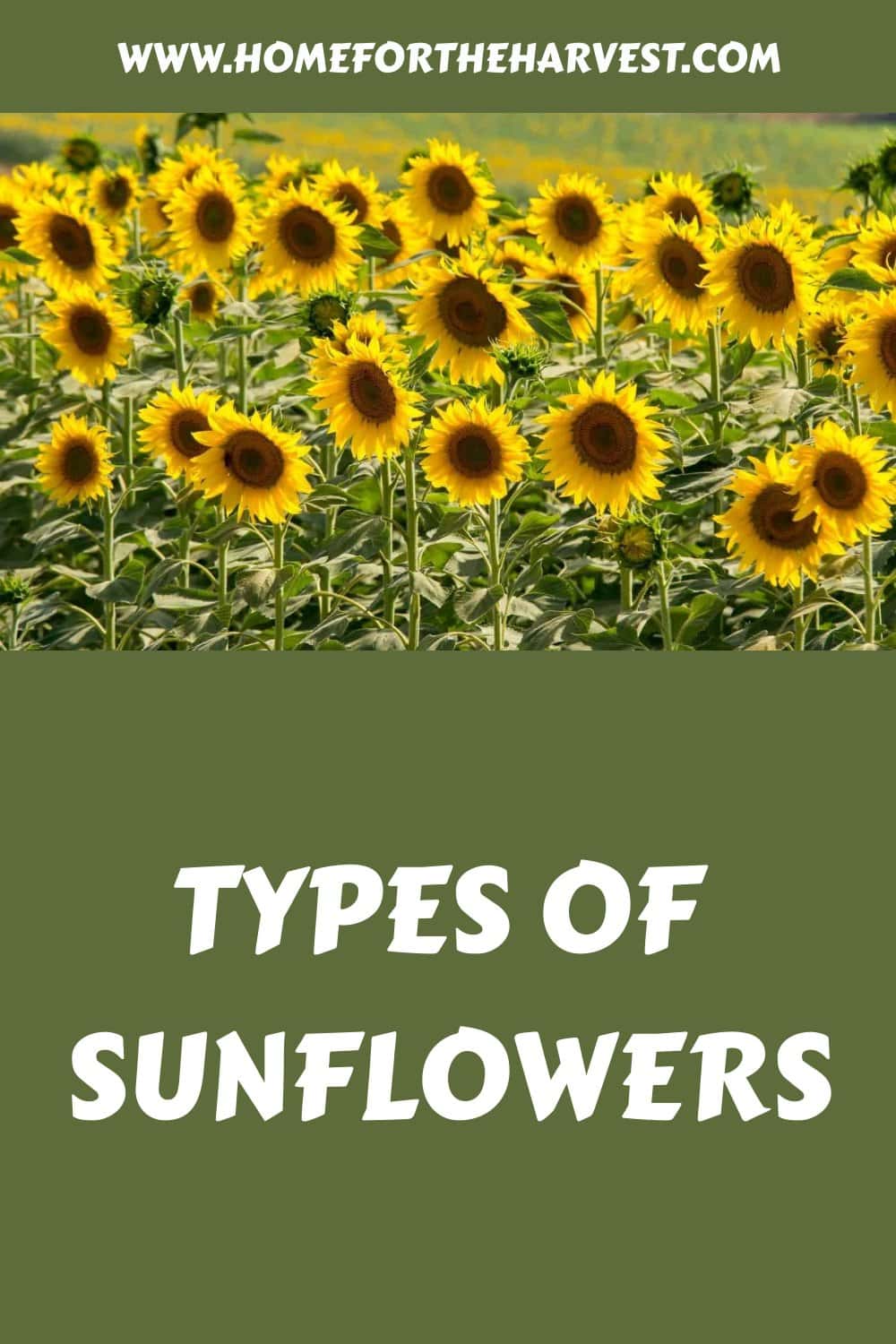There are dozens of varieties of sunflowers, and they come in all sorts of heights, colors, and growth habits.
Most sunflower varieties fit into one of five broad categories: tall sunflowers, dwarf sunflowers, florist sunflowers, branching sunflowers, and perennial sunflowers. Each of these different types of sunflowers has appropriate applications in the garden.
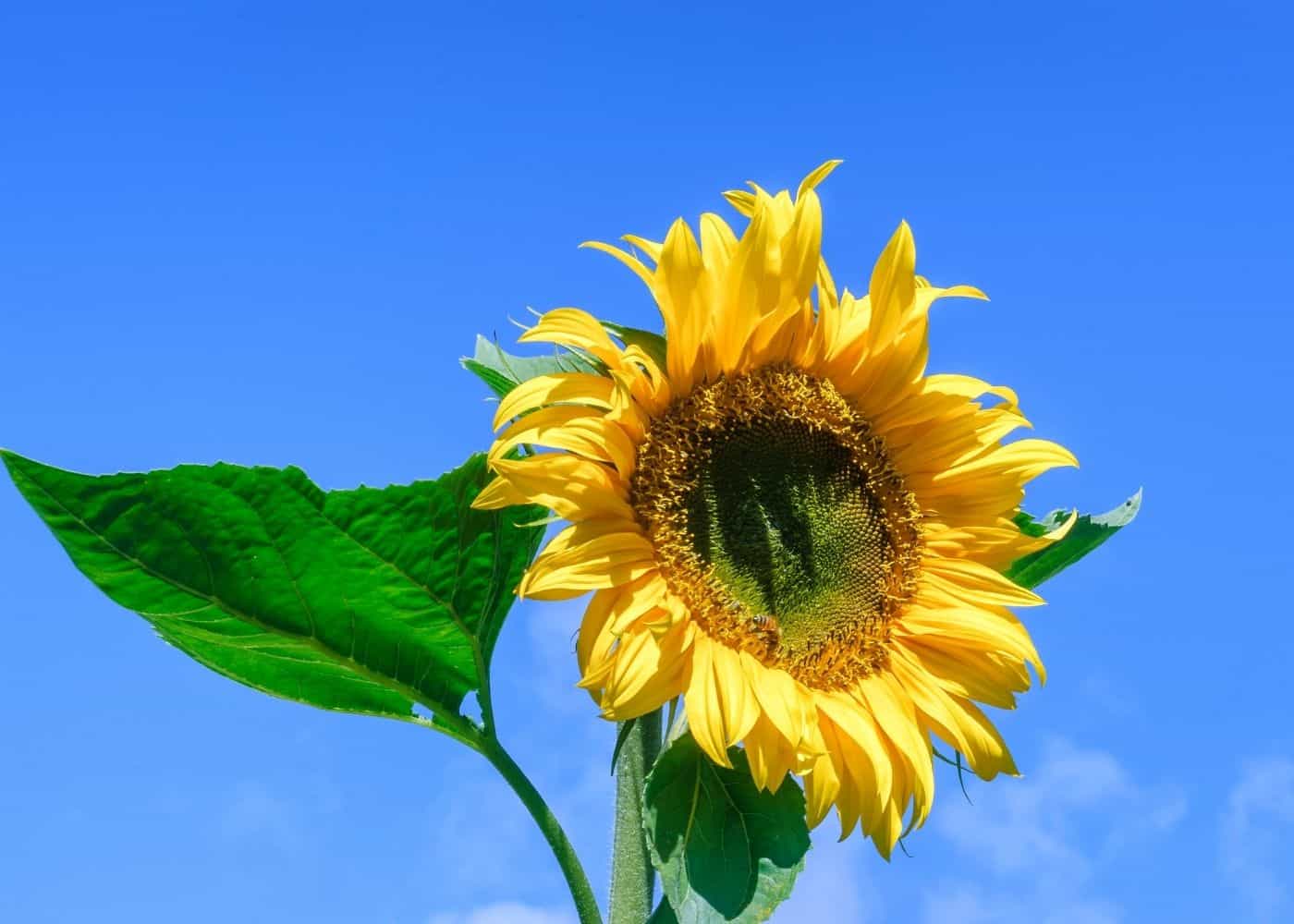
1. Tall sunflowers
Tall sunflowers (giant sunflowers) are very popular in home gardens. When you think of bright towering sunflowers, you are probably envisioning this category of sunflowers. Tall varieties can grow up to 16 ft (5m) tall!
Some of the most popular specific tall sunflower varieties include:
- Skyscraper sunflower – This variety’s seed heads will reach around 14-16 feet in height, making it an excellent choice if your garden has limited space.
- Mammoth sunflower – These huge sunflowers grow to about 12 feet and are popular pollinators for bees and butterflies. Birds and squirrels also love eating their seeds as they fall to the ground.
- Pike’s Peak sunflower – This is the type of sunflower that other sunflowers look up to because it has the largest seeds! The seeds are one and a half inches long, producing extra tall plants that range from 12 to 15 feet.
- American Giant sunflower – This type of sunflower is often used in competitions because it can grow tall. Many have grown up to 15 feet tall with flowers 1 foot in diameter. The stems are extremely sturdy to support the giant flower.
Larger sunflowers grow to be anywhere from 10 to 15 feet. The leaves of these tall plants can spread out quite far, so make sure you have a lot of room before planting these beauties in your garden.
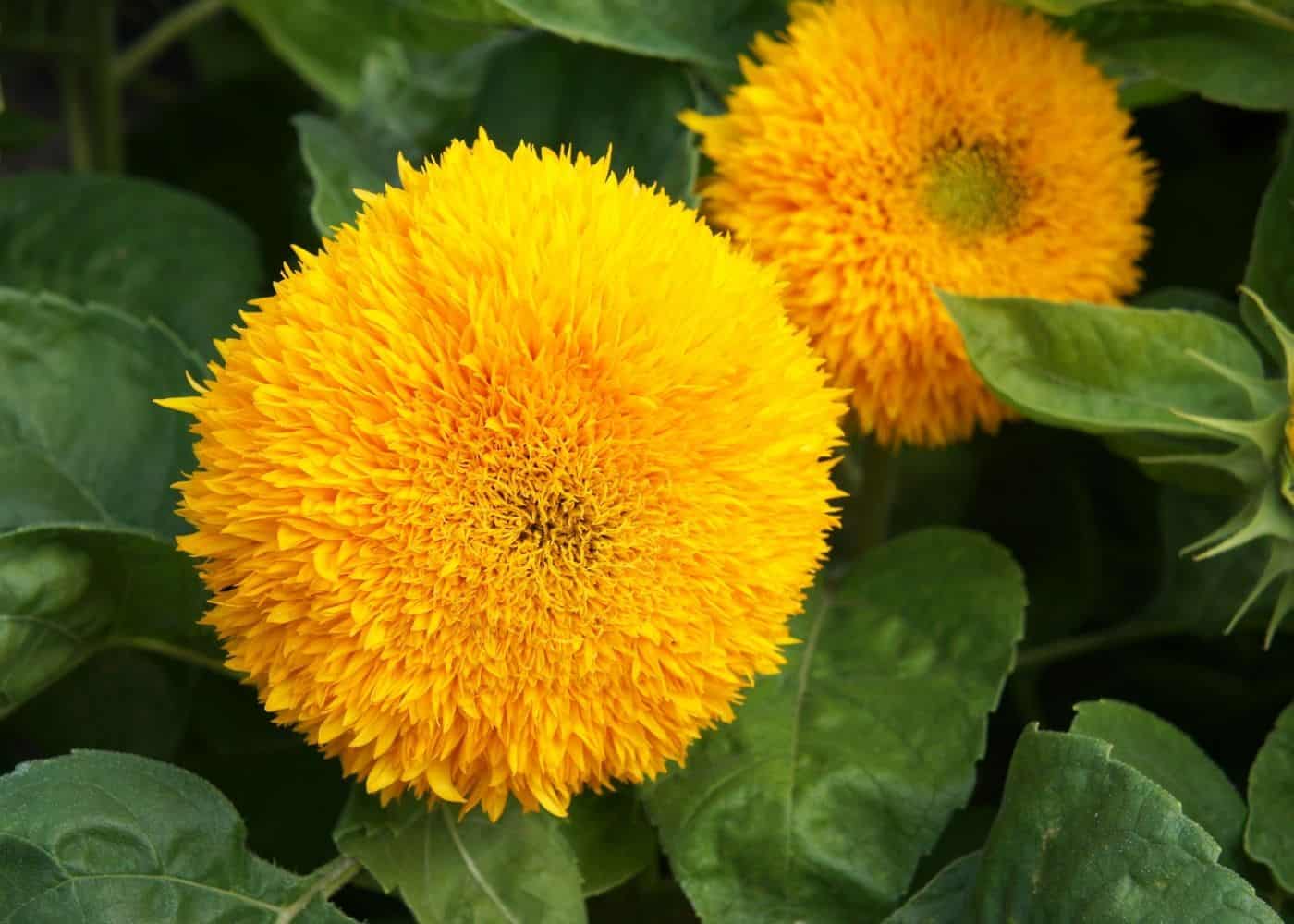
2. Dwarf sunflowers
Dwarf sunflowers are a great choice for children’s gardens and for anyone who wants to grow stunning flowers but does not have the space for a full-sized variety. These plants can grow to only 1 to 3 feet tall! Many sunflowers of this type grow well in pots. Some can even grow in window boxes.
The most common dwarf varieties include:
- Teddy Bear sunflower – This variety has a fuzzy appearance (hence the Teddy name) and doesn’t grow taller than 3 feet. It is a member of the Helianthus Annuus family.
- Suntastic sunflower – This dwarf sunflower produces no pollen but blooms 1 to 3 times every year. Some plants can have as many as twenty flowers on it.
- Big Smile sunflower – The petals on this sunflower appear very delicate and wide. They are beautiful in a children’s garden because of their height and attractive appearance.
- Sunny Smile sunflower – This miniature sunflower is a great potted plant for porches, patios, and even your kitchen table. It flowers year-round and is a hybrid dwarf variation of the sunflower that does not produce pollen.
Dwarf sunflowers are perfect for small garden spaces as well as cutting gardens. They are also ideal if you want to grow lots of these beautiful flowers but don’t have much room on your property because they’re so compact. Many people like them in hanging baskets and planters that can be hung in larger areas like porches or patios (or even indoors).
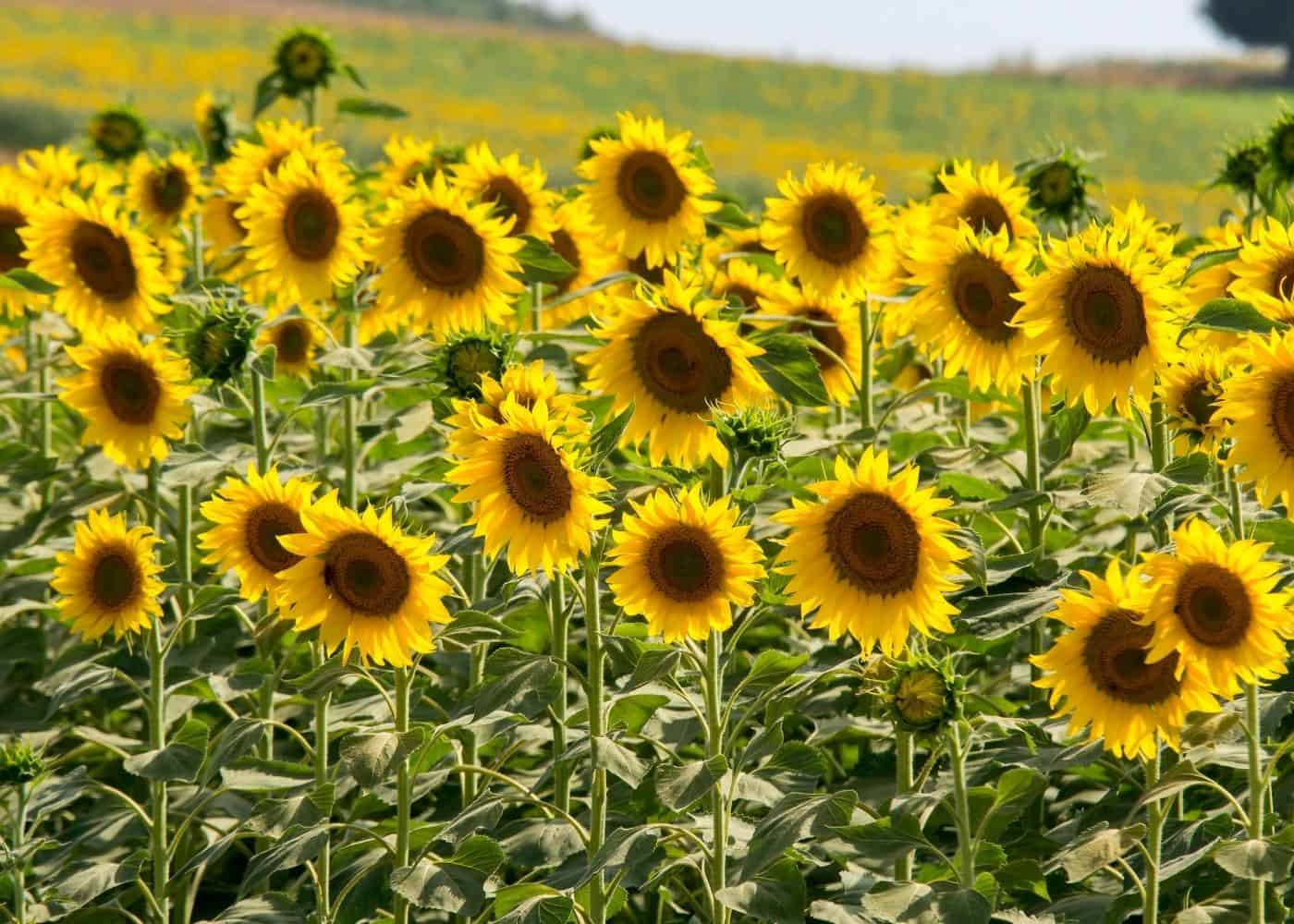
3. Florist sunflowers
Florist sunflowers are specialty varieties bred for appearance and also not to produce pollen. Most florist sunflowers are single-stem varieties (each plant grows only one flower). Most florist sunflower varieties grow to be 5′-6′ tall. The lack of pollen is a benefit for sunflowers in bouquets as the flowers won’t dust homes and tabletops with yellow powdery pollen.
Here are two of the most popular lines of florist sunflowers:
- ProCut sunflowers – These flowers range from bright yellows to deep reds. There are even bi-color varieties available that look lovely. They are pollen-less and easy to grow.
- SunRich sunflowers – This line of sunflowers is another top choice of florists as they are pollen-less and easy to grow.
While these flowers have been bred for the cut flower market, they also make wonderful home garden plants. Get the whole family involved with planting these beauties and bringing them in for bouquets.
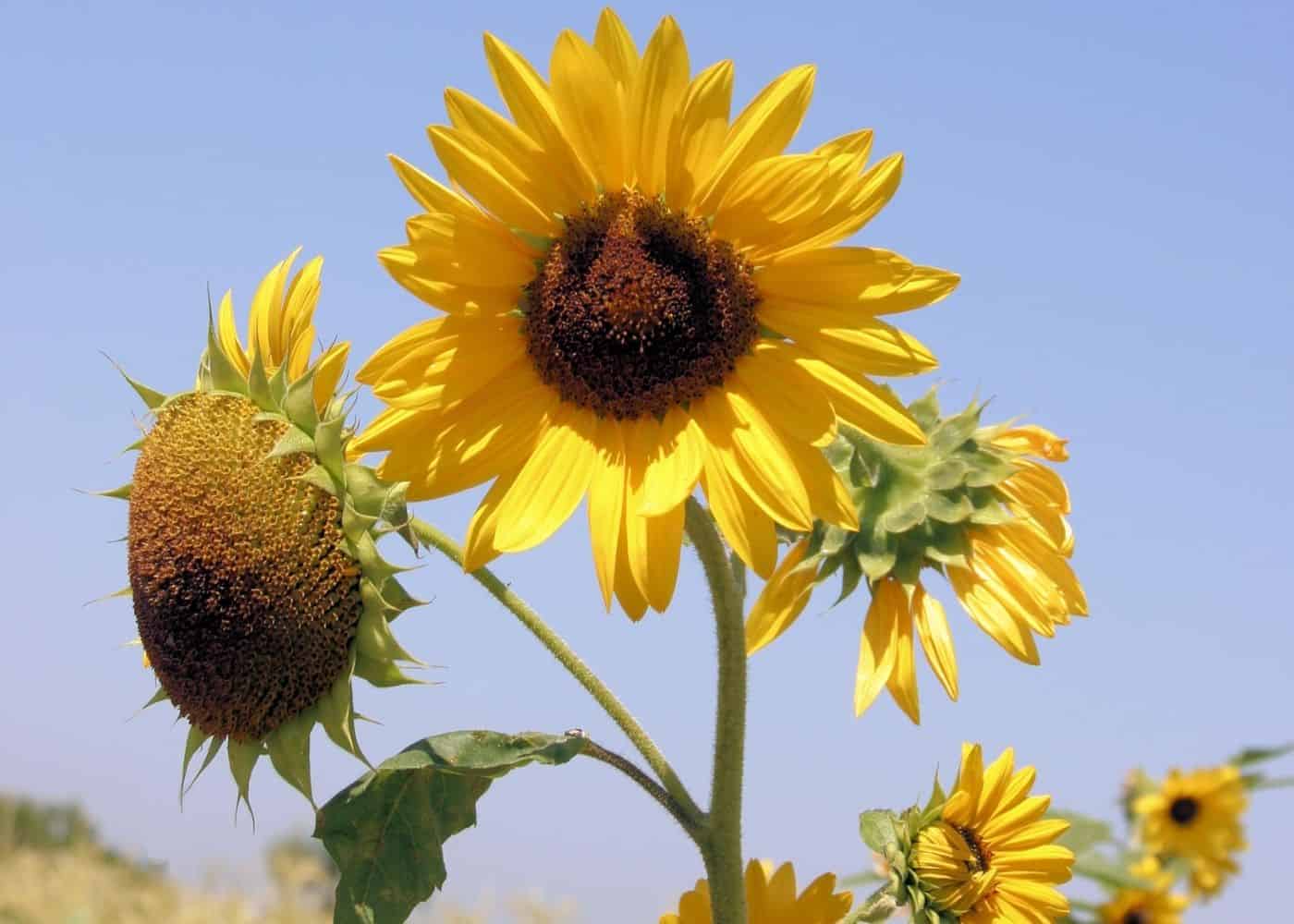
4. Branching sunflowers
Branching sunflowers have a growth habit of producing many side stems off of their main stem. Each stem has an individual flower, allowing the plant to bloom over a long period.
Instead of just growing upward, these varieties grow outward as well (so be sure to leave quite a bit of space around them when planting them!). Most branching varieties grow about 5′-6′ tall, but there are also a few dwarf and taller varieties available.
Here are some of the most popular branching sunflowers to grow:
- Lemon Queen sunflower – This heirloom sunflower has a beautiful pale lemon-yellow complexion with a chocolate brown center. This variety grows fast and tall, and the seeds are enjoyed by both people and birds. Lemon Queen is known as the top sunflower for attracting bees and other beneficial pollinators.
- Soraya sunflower – This annual sunflower has oblong leaves and extremely beautiful flowers. It branches in a way that makes the plant appear to have a ready-made bouquet.
- Rouge Royal sunflower – This deep red sunflower grows to about 5 or 6 feet tall. It’s a dramatic focal point in a garden and works well as an anchor plant for other foliage.
These beautiful branching varieties look lovely in a garden because they fill in space above smaller plants. They not only grow up but out, giving them more dimension.
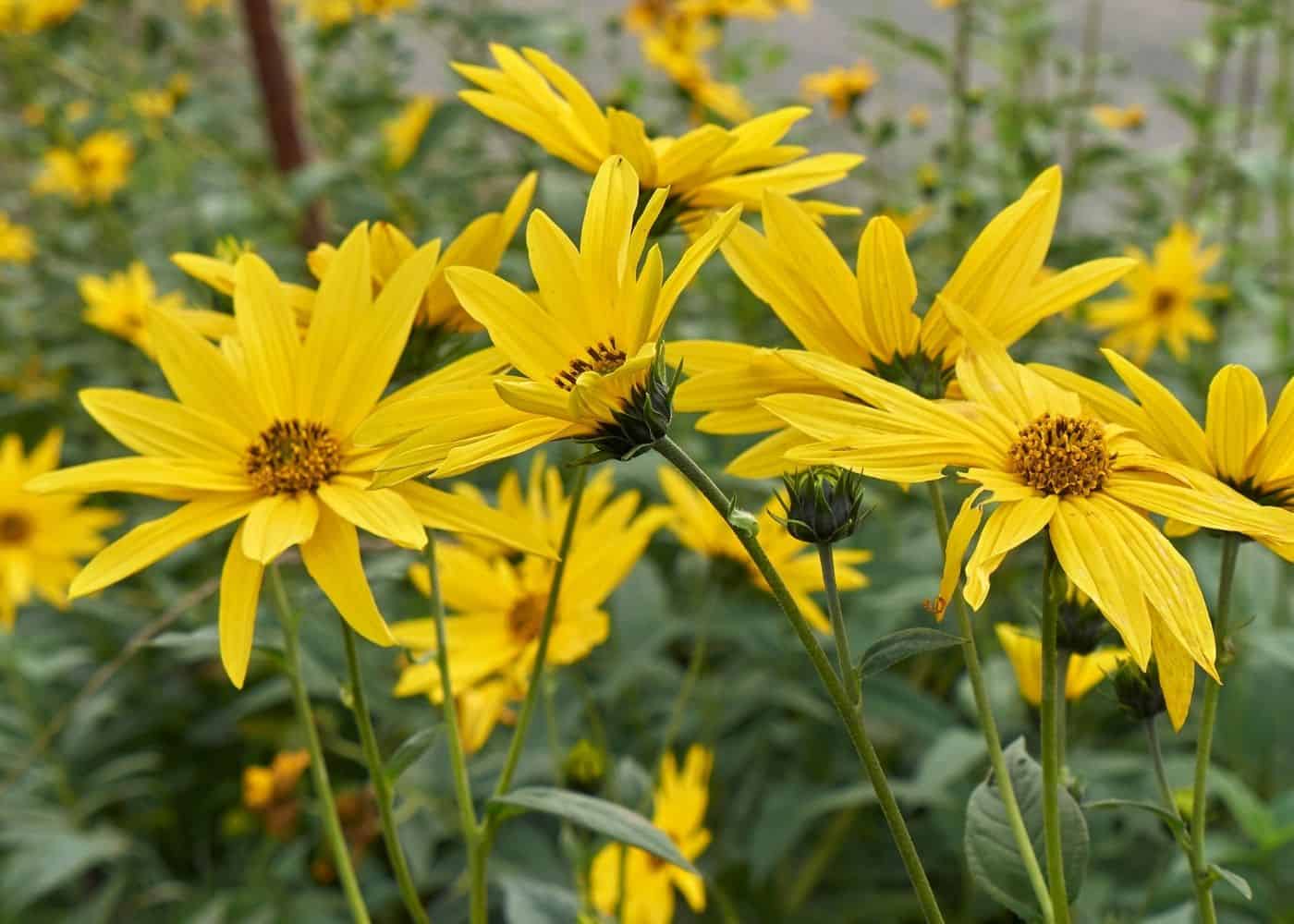
5. Perennial sunflowers
While most garden sunflowers are annual (and must be planted each spring), there are a few species of sunflowers that are perennial plants. Perennial sunflowers live for many years and tend to have smaller flowers than the annual sunflowers described above. While the foliage dies back to the ground each fall, the roots of the plant live through wintertime and sprout again each spring.
- Maximilian sunflower (Helianthus maximiliani) – This species has a hairy stem and long, full petals. They produce flowers from late summer into fall. They love full sun and are deer-resistant.
- Jerusalem artichoke (helianthus tuberosus) – This species, also called sunchoke, is known for its edible tubers (roots) which are often prepared like potatoes.
- Ashy sunflower (Helianthus mollis) – This species flowers from July to September and attracts lovely finches and other birds. It also thrives in sandy and gravelly soils.
- Western sunflower (Helianthus occidentalis) – This species has small daisy-like sunflowers that appear in clusters above the plant, making it a favorite for pollinators.
- Thinleaf sunflower (Helianthus decapetalus) – This species has daisy-like yellow flowers that tend to have 10 petal-like ray florets around the center.
These perennial sunflowers will grow back from their roots every year (meaning you don’t have to re-plant them each spring).


